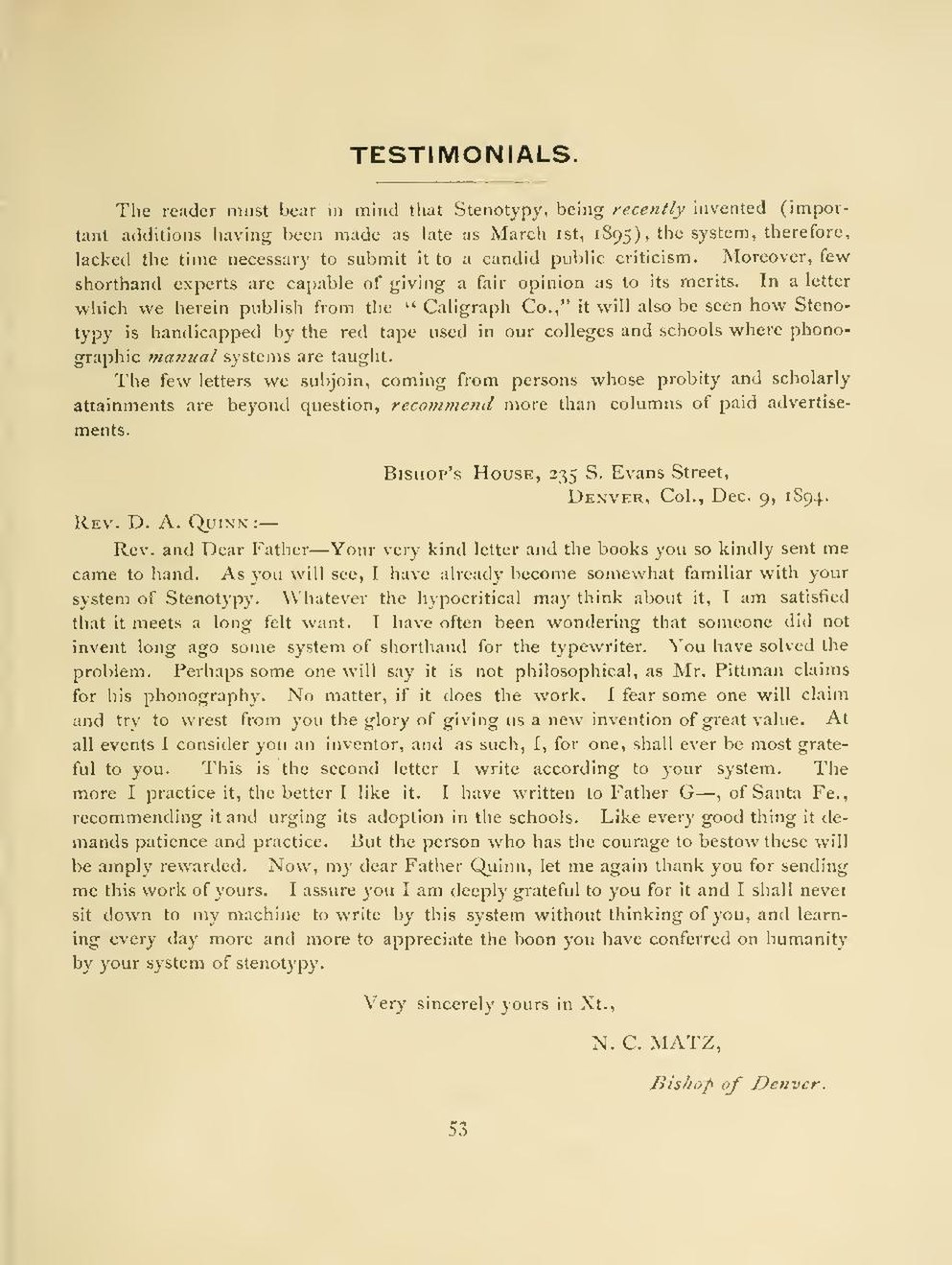TESTIMONIALS.
The reader must bear in mind that Stenotypy, being recently invented (important additions having been made as late as March 1st, 1895), the system, therefore, lacked the time necessary to submit it to a candid public criticism. Moreover, few shorthand experts are capable of giving a fair opinion as to its merits. In a letter which we herein publish from the Caligraph Co.," it will also be seen how Stenotypy is handicapped by the red tape used in our colleges and schools where phonographic manual systems are taught.
The few letters we subjoin, coming from persons whose probity and scholarly attainments are beyond question, recommend more than columns of paid advertisements.
Bishop's House, 235 S. Evans Street,
Denver, Col., Dec. 9, 1894.
Rev. D. A. Quinn:-
Rev. and Dear Father-Your very kind letter and the books you so kindly sent me came to hand. As you will see, I have already become somewhat familiar with your system of Stenotypy. Whatever the hypocritical may think about it, I am satisfied that it meets a long felt want. I have often been wondering that someone did not invent long ago some system of shorthand for the typewriter. You have solved the problem. Perhaps some one will say it is not philosophical, as Mr. Pittman claims for his phonography. No matter, if it does the work. I fear some one will claim and try to wrest from you the glory of giving us a new invention of great value. At all events I consider you an inventor, and as such, I, for one, shall ever be most grateful to you. This is the second letter I write according to your system. The more I practice it, the better I like it. I have written to Father G——, of Santa Fe., recommending it and urging its adoption in the schools. Like every good thing it demands patience and practice. But the person who has the courage to bestow these will be amply rewarded. Now, my dear Father Quinn, let me again thank you for sending me this work of yours. I assure you I am deeply grateful to you for it and I shall never sit down to my machine to write by this system without thinking of you, and learning every day more and more to appreciate the boon you have conferred on humanity by your system of stenotypy.
Very sincerely yours in Xt.,
53
